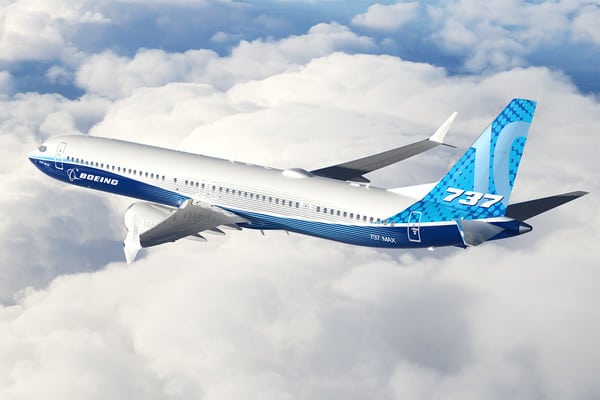Aviation
Boeing would suspend max 10 project if certification is delayed.

Currently, Boeing has received 640 orders for Boeing 737 Max 10 aircraft, which compete with the Airbus A321 Neo. Boeing is looking for a regulatory deadline that will allow them to begin services. Even after the launch, a few airlines are eager to place more orders. If the airline does not receive clearance to launch the aircraft within the estimated time frame, further job growth at the Renton assembly plant may be curtailed.
Recently, three Chinese airlines placed the largest order to Airbus, valued $37 billion, for around 292 aircraft. Beijing indicates that it supports the Airbus brand in its home nation. However, Boeing is under pressure to release new aircraft while still maintaining its market presence.
Calhoun told Aviation Week editors at Boeing’s new headquarters in Arlington, Virginia, that the current MAX 10 design is a “all-or-nothing” package that regulators must accept as-is — without the safety update that some have pushed for.
The FAA told Boeing earlier this year that the Max 10 might not be certified by the end of the year. An airline must be certified before it can begin operations.
If Boeing does not receive certification, it will be required to install an alerting system in the cockpits of the Max 10s under laws that go into effect in 2023. That is, unless the US Congress grants a waiver.
Boeing Max has already begun flying and has received favourable feedback from airlines; in fact, Akasa India’s newest airline has made a fresh order, Boeing IAG has ordered over 50 aircraft, and Delta is in talks to acquire more. Boeing maintains regular contact with the regulator to ensure that Max aircraft receive proper flying, maintenance, and training.
Features :
- Boeing 737 max has length 43.8 metres, or 143 feet 8 inches, making it two rows or 66 inches longer than the MAX-9.
- 230 passengers in a single-class configuration, 12 more than the MAX-9.
Doors at the mid-exit will be 4 inches wider to increase the exit limit rating. - a 3215 nm range. somewhat shorter (3,515nm) than MAX-8 and -9, but 265nm longer than -900ER (A321NEO range c4000nm)
- MTOW is slightly higher, around 92,000 kg.
- Leap-1B engine with potential thrust increase
- Levered MLG that extends during takeoff by up to 24 cm (9.5 in) to avoid tail hit.
- improved body shape to lower the possibility of tail hits.
- More approaches and landings are possible at Flaps 40 thanks to a “enhanced flap design.”
- Modifications to the maximum landing weight centre of gravity are made to prevent “tail tip” incidents.
- Entry into service approx. 2023

Aviation
Boeing, Antonov to Collaborate on Defense Projects

– MOU represents Boeing’s commitment to work with Ukrainian industry
– Includes exploring opportunities for collaborating on in-country support of Unmanned Aerial Systems
A Memorandum of Understanding was signed today by Boeing and Antonov Company to investigate potential collaboration on defense-related projects.
“We’re happy to keep collaborating with the Antonov Company to help Ukraine’s economic development and expansion,” stated Ted Colbert, CEO and president of Boeing Defence, Space, & Security.
Airbus and the Antonov An-225: The Best Partnership:Click here
“This agreement demonstrates our ongoing efforts to find more opportunities to work with Ukrainian industry, which was underscored by our signing of the Ukrainian Defence Industry Compact earlier this year.”
The areas of potential collaboration identified in the agreement consist of training, logistical support and overhaul services for tactical Unmanned Aerial Systems utilized by the Ukrainian Armed Forces, which includes the ScanEagle. In addition, the companies will also explore opportunities for Antonov to provide engineering support to Boeing.
The six largest cargo aircraft ever built in the aviation industry:Click here
“A strong, innovative, and efficient defense industry is key to sustainable economic development and national security, and we are extremely excited to collaborate with Boeing,” said Ievhen Gavrylov, CEO of Antonov Company.
This agreement brings a whole new level of opportunity to implement the latest and most effective solutions – in addition to the possibility of future projects with Boeing in the aerospace and defense industry.”
-

 Travel1 week ago
Travel1 week agoAir India to Expand US Operations with Three New Routes After a Decade
-

 Travel2 weeks ago
Travel2 weeks agoWhy We Should Avoid These Stamps in a Passport
-

 Airlines1 month ago
Airlines1 month agoInvestigations Reveal Fake Chinese Titanium in Boeing and Airbus Jets
-

 Tech4 weeks ago
Tech4 weeks agoChina’s CATL Plans 1,800-Mile Electric Plane Launch by 2027
-

 Airport3 days ago
Airport3 days agoTop 10 Largest Airports in the World by Size
-

 Aerospace4 weeks ago
Aerospace4 weeks agoChina’s Fighter Jets Turn Wings into Autonomous Drones
-

 Airlines4 days ago
Airlines4 days agoAir India Rolls Out A350s for Delhi-New York JFK and Newark Routes
-

 Defence3 weeks ago
Defence3 weeks agoBoeing Enhances Chinook with New Engines and Block II Upgrades at $96 Million







